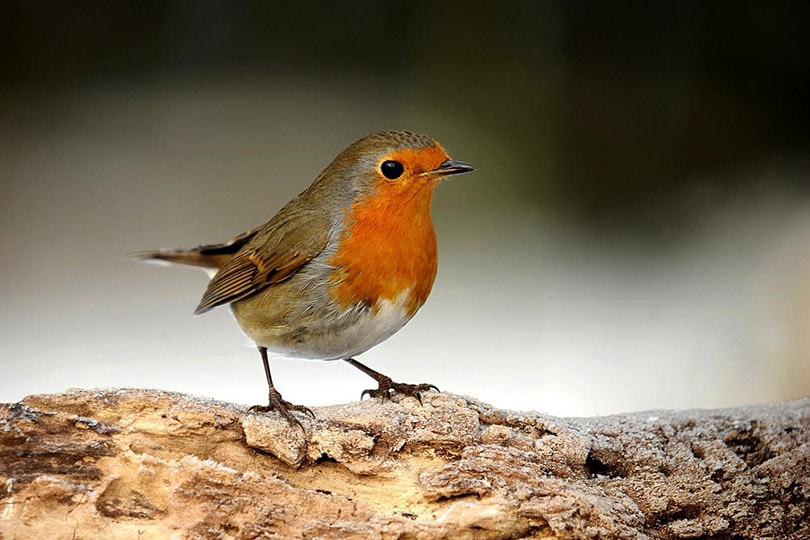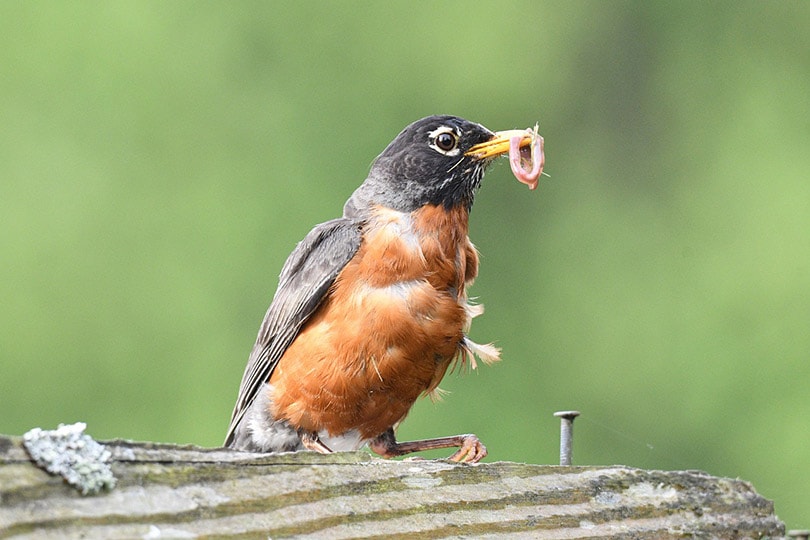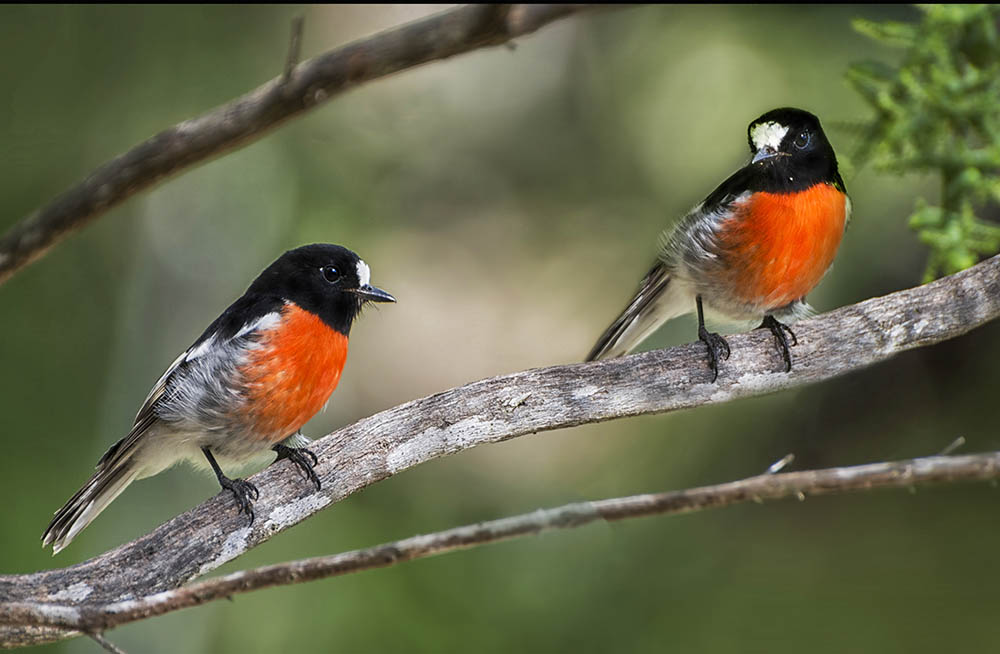What is Wisconsin’s state bird? How was it decided?
Last Updated on

Despite frigid winters, Wisconsin is still a great state for bird watchers. From summer’s hummingbirds to winter’s cardinals, there are birds to see all year round. The official state bird is easy to spot because of its bright reddish-orange breast: the American Robin.
Learn more about the Turdus migratorius, including what they eat, if they migrate, and whether they mate for life.

Why Is the Robin the Wisconsin State Bird?
The American Robin wasn’t chosen by a politician or even the public at large. The Badger State trusted school children to choose the state bird during the 1926–1927 academic year. It’s no surprise that the young students chose the robin to be Wisconsin’s state bird. The robin is a common bird with a pleasant “cheer-up cheer-up” sounding call.
The state bird is more than a designation in Wisconsin—it’s the law. It took two decades to make it official, but in 1949 the state legislature made the robin the official state bird.

What Do Adult American Robins Look Like?
Adult male robins have a solid, bright reddish-orange stomach, a black head, and grey back feathers. Adult female robins have a more muted orange stomach, with spots of grey or white. Their heads and backs are mottled grey and white.
What Do American Robins Eat?
If you haven’t had success attracting robins to a bird feeder filled with seeds, there’s a good reason for that. The robins that live throughout Wisconsin are omnivores. These red-breasted birds pass up seeds to dine on insects, berries, and fruit trees. Robins that are especially motivated—and not to mention hungry—will even prey on frogs and smaller fish.
American Robins are foragers, so they’re naturally inclined to pick through grass and eat food off the ground. If you want to attract more American robins to your property, consider these tips:
- Place small fruit chunks on or close to the ground.
- Water your lawn in the morning to bring earthworms to the surface.
- Cut back or eliminate insecticide use. Robins will do the work for you!

How Many Eggs Do Robins Lay?
A pair of robins can produce numerous offspring each year. Their breeding season lasts four months, from April through July. During that time, a female will lay two or three separate sets of eggs called a “clutch.” Each clutch of robin eggs consists of three to five eggs.
In theory, a robin pair could produce as many as 15 babies each season. However, the actual numbers are likely smaller for most breeding robins. Not all eggs will hatch, and not all young robins survive the summer. The American Robins have a fairly high mortality rate, at 50% each year.
Do Robins Mate for Life?
If you’ve seen a pair of robins return to the same nesting spot year after year, it’s unlikely that it’s the same male and female. Robins do not pair up for life. However, birds who mated in the past may pair up again if they are in the same location during the breeding season.
Unless the male or female dies, robins spend the entire mating season with one partner.

Do Robins ‘Go South’ for the Winter?
The winters in Wisconsin can seem never-ending. Spotting a robin in March or April is a cause for celebration. A robin sighting is often heralded as the first “sign of spring.” But do robins migrate to southern states during the winteror do they stay in the Upper Midwest? The answer to both those questions is, “Yes.”
Robins are nomadic and go wherever they can find food. Their decision to migrate is based more on food availability than weather conditions. Have robins been tracked traveling thousands of miles south during the winter? Yes.
And do some robins hunker down, deep in the Wisconsin woods where there are wild fruit or berry bushes? Also, yes. Robins are more active, and thus more visible, in spring. While seeing a robin can mean warmer weather is on the way, that robin may have spent the winter just a mile or two from your house.

The American Robin: A Bird for All Seasons
Robins have long been one of Wisconsin’s beloved birds. Adult males are easy to spot, with their bright orange bellies. These birds typically won’t dine on seeds, so consider leaving out small chunks of fruit to attract them. They also love earthworms, so you may see robins pecking the ground after a rainstorm or after watering your lawn.
A pair of robins can mate for multiple seasons, but they don’t do so as a matter of course. They can have up to three clutches each year, so you may see baby robins all summer long.
Robins are nomadic birds who may or may not migrate to warmer states. If you look hard enough, you just might spot a robin during the winter.
Featured Image Credit By susannp4, Pixabay
About the Author Robert Sparks
Robert’s obsession with all things optical started early in life, when his optician father would bring home prototypes for Robert to play with. Nowadays, Robert is dedicated to helping others find the right optics for their needs. His hobbies include astronomy, astrophysics, and model building. Originally from Newark, NJ, he resides in Santa Fe, New Mexico, where the nighttime skies are filled with glittering stars.
Related Articles:
10 Types of Hummingbirds in Arkansas (With Pictures)
8 Types of Hummingbirds in Nebraska (With Pictures)
5 Types of Hummingbirds in Idaho (With Pictures)
3 Types of Hummingbirds in Mississippi (With Pictures)
8 Types of Hummingbirds in Kansas (With Pictures)
5 Types of Hummingbirds in West Virginia (With Pictures)
5 Types of Hummingbirds in Ohio (With Pictures)
Where Do Nuthatches Nest? Nuthatch Nesting Habits Explained
